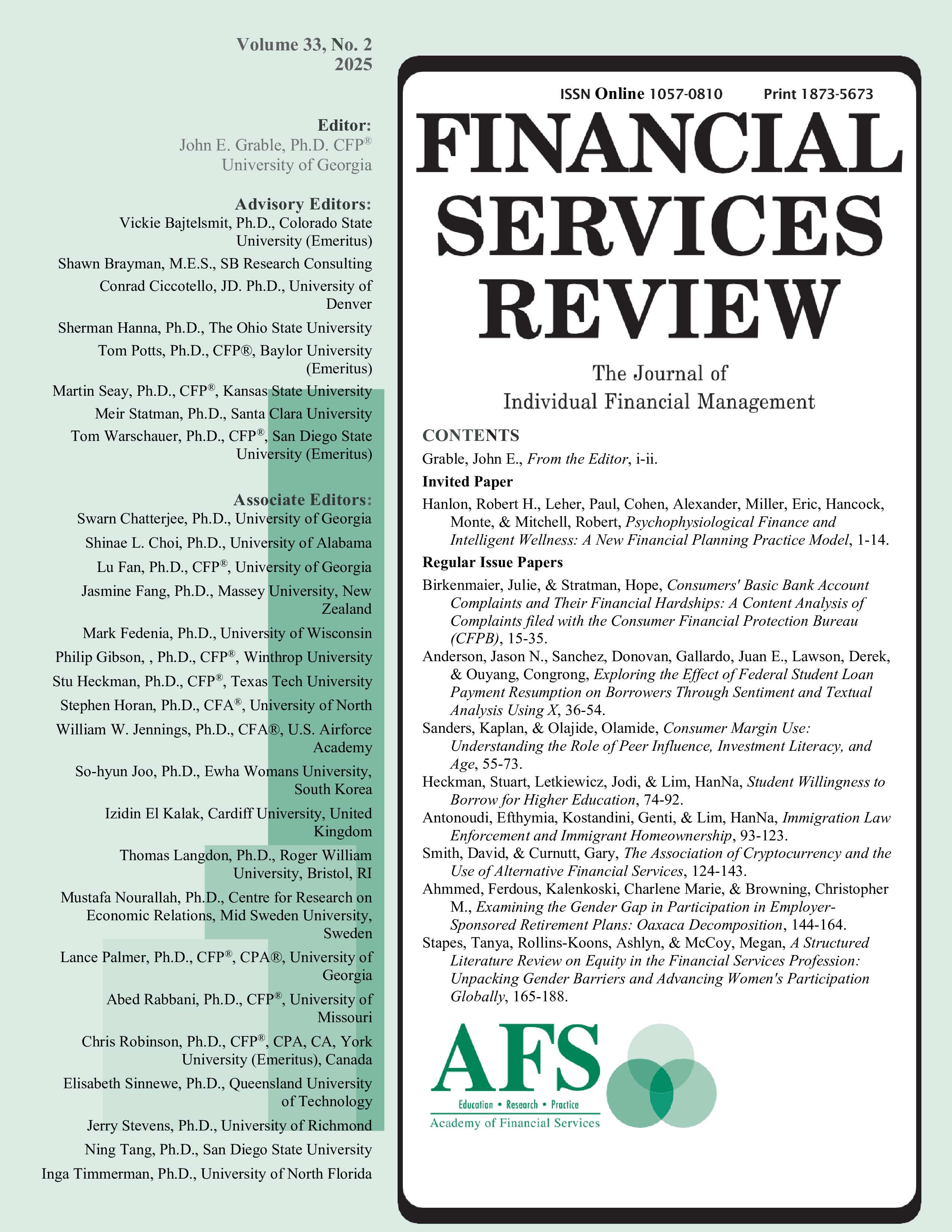Student Willingness to Borrow for Higher Education
DOI:
https://doi.org/10.61190/fsr.v33i2.4060Keywords:
student loans, willingness to borrow, college students, higher education costs, Human capitalAbstract
A human capital model is used to examine students’ willingness to borrow to pay for a college degree. We hypothesize direct costs of education and education goals to be positively associated and current income and alternative financial support to be negatively associated with willingness to borrow. Using college student data from the 2020 Study on Collegiate Financial Wellness, we found that 13% of college students are not willing to borrow to pay for school, 31% are willing to borrow up to $20,000, and 27% are willing to borrow up to $50,000. Overall, we find evidence that students’ willingness to borrow corresponds to the rational decisions predicted from human capital theory. Higher tuition costs, educational goals, and fields of study with higher expected pay were all positively associated with willingness to borrow. Income is positively correlated with willingness to borrow at the lower end of income, but as income increases, the amount students are willing to borrow is less. Alternative financial support from either scholarships, grants, or family is negatively associated with willingness to borrow, which is all consistent with the two-period human capital model.
Downloads
Published
How to Cite
Issue
Section
License
Copyright (c) 2025 Stuart Heckman, Jodi Letkiewicz, HanNa Lim

This work is licensed under a Creative Commons Attribution-NonCommercial 4.0 International License.
Author(s) retain copyright and grant the Journal right of first publication with the work simultaneously licensed under a Creative Commons Attribution-NonCommercial 4.0 International License that allows to share the work with an acknowledgment of the work's authorship and initial publication in this Journal.
This license allows the author to remix, tweak, and build upon the original work non-commercially. The new work(s) must be non-commercial and acknowledge the original work.


